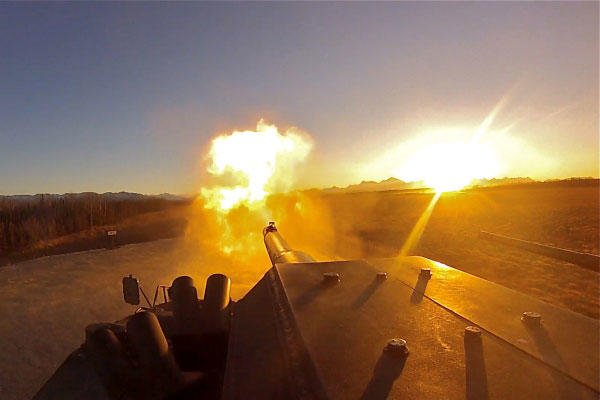The U.S. Army is experimenting with electricity to give field artillery rounds extended range.
As part of an Army Science and Technology-funded project, engineers at Picatinny Arsenal in New Jersey are using electrical charges to give artillerymen greater control over propellants, which would give some long-range artillery rounds extended range, power and versatility.
"If you can control the burn rate and energy output of a propellant with electric voltage, this opens a whole new capability," David Thompson, a chemical engineer and member of the research team, said in a recent Army press release.
The Army uses artillery rounds that have two different types of motors for their extended range propellants. One type is a base bleed motor, which gets some extended range over a normal round and burns right out of gun, Thompson said.
The second type is a rocket-assist motor, which doesn't burn until it gets the top of its flight, before it boosts and increases the velocity of the projectile.
Related Video:
![]()
"With electric voltage, you could use one motor that does both," Thompson said. "You could create a low-voltage, right out of the gun, and get that base-bleed effect, and then hit it with a high voltage and get the rocket-assist effect, ultimately increasing the range over that which either motor can provide on its own."
Currently, the XM1128 artillery round, which uses a base-bleed motor, can achieve a maximum range of 30 kilometers. The XM1113 round, which uses a rocket-assist motor, can achieve a maximum range of 40 kilometers. Applying electrical voltage would potentially increase the range of both rounds, Army officials maintain.
Increasing the propellant's extended range is just one benefit of this project, though.
The team's ultimate goal is to provide the units with more control over the rocket propellant in the same way "we can flick a switch to turn on the light." In turn, this could increase not only the propellant's range and burn rate, but also its power and speed, officials say.
"When you fire a gun propellant at some tank, the performance differs in different temperatures," Thompson said. "For example, the round's velocity is different when it's fired in a hot temperature than in a colder temperature.
"So, the troops have their manual that basically says 'If you put your gun at this angle, and fire this charge, it will get this much velocity and you'll hit the target.' But, because the propellant's effectiveness can change in different environments, they have to compensate for temperature. Our idea was to use an electrical igniter with a propellant that we can control, allowing us to burn the propellant at different speeds and rates."
Testing and evaluation will take time, but researchers maintain that the new method "would not cost any more than the propellants that we have fielded now," Thompson said.
"You're adding that extra capability of turning it on or off and controlling its burn rate in flight, which now you can't do at all," he said.
--Matthew Cox can be reached at matthew.cox@military.com.






























